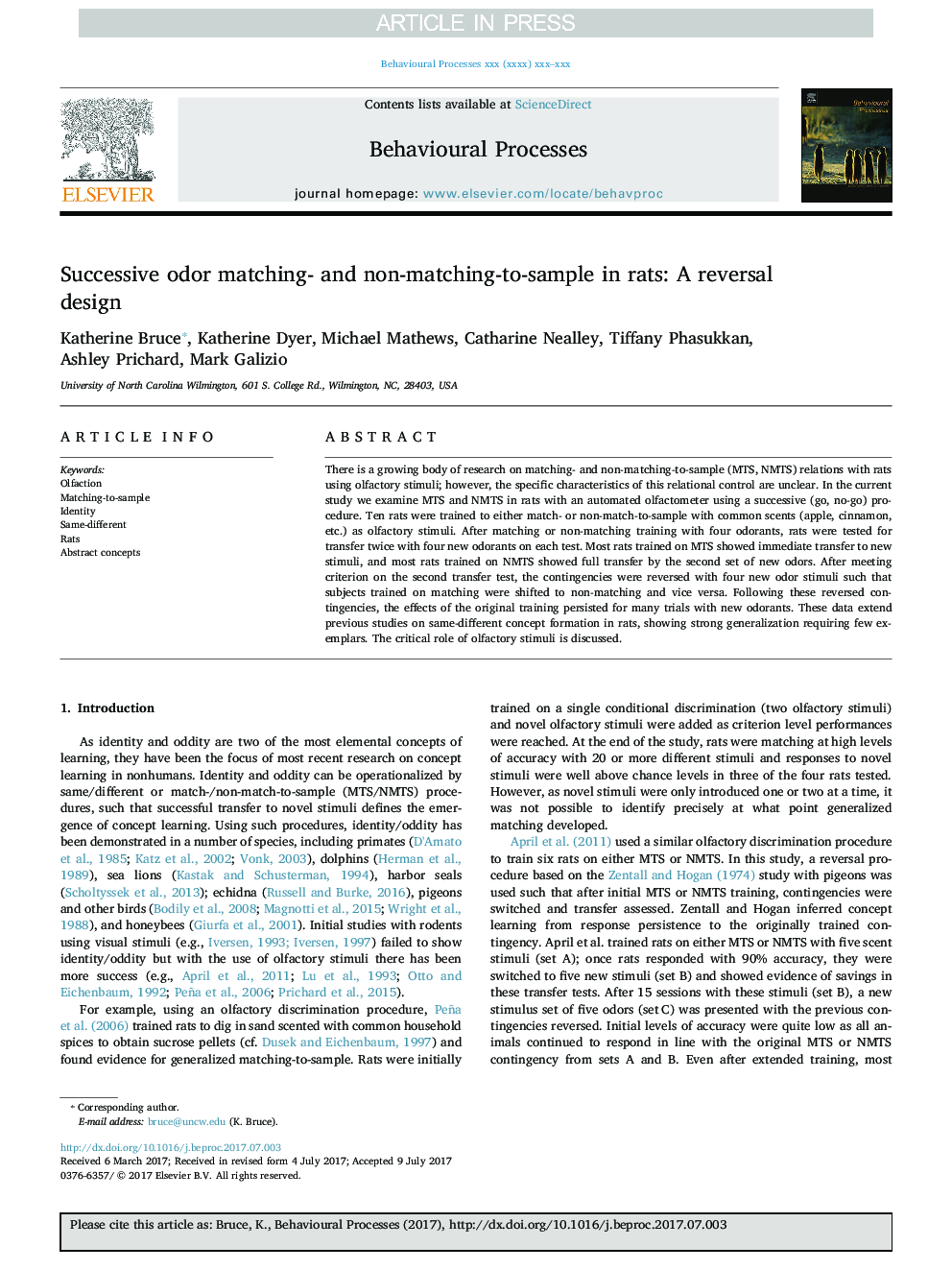| Article ID | Journal | Published Year | Pages | File Type |
|---|---|---|---|---|
| 10158026 | Behavioural Processes | 2018 | 7 Pages |
Abstract
There is a growing body of research on matching- and non-matching-to-sample (MTS, NMTS) relations with rats using olfactory stimuli; however, the specific characteristics of this relational control are unclear. In the current study we examine MTS and NMTS in rats with an automated olfactometer using a successive (go, no-go) procedure. Ten rats were trained to either match- or non-match-to-sample with common scents (apple, cinnamon, etc.) as olfactory stimuli. After matching or non-matching training with four odorants, rats were tested for transfer twice with four new odorants on each test. Most rats trained on MTS showed immediate transfer to new stimuli, and most rats trained on NMTS showed full transfer by the second set of new odors. After meeting criterion on the second transfer test, the contingencies were reversed with four new odor stimuli such that subjects trained on matching were shifted to non-matching and vice versa. Following these reversed contingencies, the effects of the original training persisted for many trials with new odorants. These data extend previous studies on same-different concept formation in rats, showing strong generalization requiring few exemplars. The critical role of olfactory stimuli is discussed.
Related Topics
Life Sciences
Agricultural and Biological Sciences
Animal Science and Zoology
Authors
Katherine Bruce, Katherine Dyer, Michael Mathews, Catharine Nealley, Tiffany Phasukkan, Ashley Prichard, Mark Galizio,
